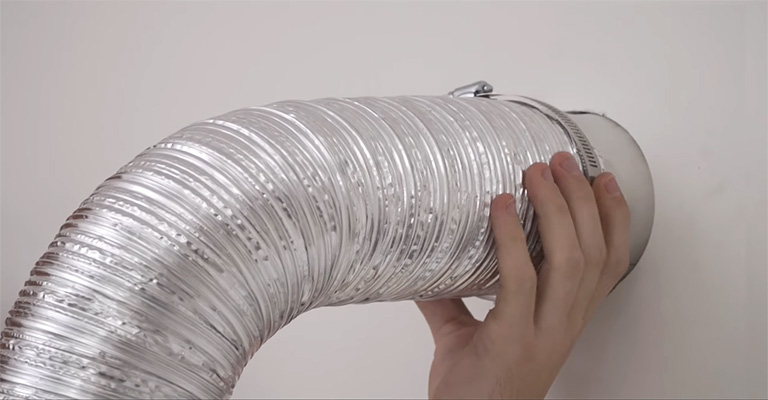Is it Possible to Install an Air Conditioner in a Shipping Container Home?
Shipping container homes have become increasingly popular due to their eco-friendly nature, cost-effectiveness, and unique designs. However, as innovative as these homes are, they present some challenges regarding temperature control.
Maintaining a comfortable living environment inside a metal box can be daunting in sweltering summers. This is where air conditioning comes to the rescue.
Find out the possibilities of installing an air conditioner in Australia’s shipping container home, the options, and the considerations to ensure an optimised cooling system for your container haven.
Shipping Container Air Conditioning Options
Window Air Conditioners
Window air conditioning units are popular for cooling smaller spaces. They are easy to install, affordable, and readily available. However, a window air conditioner might not be the best option for modified shipping containers, as their fixed vents might not fit the container’s unconventional structure.
Mini-Split Air Conditioners
Mini-split systems are highly efficient and provide flexible temperature control for individual rooms. They consist of an indoor and outdoor unit connected by a conduit. A mini-split air conditioner is a viable option for shipping container homes, allowing for more controlled cooling power and customisable installation.
Packaged Terminal Air Conditioners (PTAC)
A packaged terminal air conditioner is commonly used in hotel rooms and offices. While they are an option for container homes, they might require larger modifications to fit the standardised PTAC size, altering the airflow in the container.
Portable Air Conditioners
If you’re looking for a temporary cooling solution or don’t want to invest in a permanent air conditioner, portable air conditioners can be a good option. They are versatile, easy to move around and require minimal installation. However, they might not provide the same cooling power as a fixed system, and their efficiency can vary depending on the unit’s size and BTU rating.
Optimising Air Conditioning in Shipping Container Homes
Optimising air conditioning in shipping container homes is crucial to ensure a comfortable and livable environment inside these unique and innovative living spaces. Storage containers are not originally designed for human habitation, so maintaining an ideal temperature can be challenging.
However, with thoughtful planning and strategic measures, creating an effective cooling system that maximises comfort and minimises energy consumption is possible. Here are some key considerations for optimising air conditioning in shipping container homes:
Proper Insulation
Heat transfer is a primary challenge in container homes. Metal conducts heat, making the container’s interior susceptible to extreme temperatures, especially on a hot summer day. To combat this, proper insulation is essential.
High-quality insulation materials, such as foam or spray foam, should be used on the interior walls and ceilings to create a thermal barrier. This helps to regulate indoor temperatures by preventing heat from seeping in and cool air from escaping.
Ventilation and Air Circulation
Ventilation is crucial to maintaining a consistent airflow inside the container home. Standard shipping containers often lack sufficient ventilation, leading to stagnant air and uneven cooling. Adding fixed or louvred vents strategically throughout the container can improve air circulation.
Consider placing vents near windows or doors to facilitate cross-ventilation and expel warm air effectively. Ventilation promotes better cooling, helps reduce humidity, and prevents moisture buildup, which can lead to mould and mildew.
Reflective Exterior Finishes
The colour of the container’s exterior can significantly impact its heat absorption. Light grey or light-coloured container homes tend to reflect more sunlight, reducing the heat the walls absorb.
On the other hand, darker colours tend to absorb more heat, leading to higher temperatures inside the container. Applying reflective coatings or lighter-coloured paints to the exterior can help minimise heat gain and improve the effectiveness of the air conditioning system.
Solar Heat Gain Mitigation
In hot climates, the sun’s rays can be intense and cause a greenhouse effect inside the container home. Installing shade structures, such as awnings or pergolas, can help reduce direct exposure to the sun, lowering the interior temperature.
Additionally, using window films or shades can prevent excessive solar heat gain while allowing natural light to enter the space.
Energy-Efficient Air Conditioning Units
Choosing the right air conditioning unit is critical for optimising cooling efficiency and reducing energy consumption.
Mini-split air conditioners are often the preferred choice for container homes due to their individual room temperature control and energy efficiency. They consist of indoor and outdoor units connected by a conduit, providing efficient cooling while minimising modifications to the container’s structure.
Consider a Heat Pump
Heat pumps are versatile systems that can provide cooling and heating for container homes. They transfer heat from one place to another and can operate in reverse to provide warmth during colder months.
Heat pumps are highly energy-efficient, making them eco-friendly for year-round temperature control.
Dehumidification
Proper dehumidification ensures a comfortable living environment, especially in humid climates. Excessive humidity can lead to discomfort, condensation issues, and the growth of mould and mildew.
Incorporating dehumidifiers or selecting air conditioning units with dehumidification capabilities can help maintain optimal humidity levels.
Investing in the right cooling solutions and implementing smart design strategies can transform your container home into a haven that offers respite from the heat and a unique, stylish living experience.
Mini Split vs. PTAC: Choosing the Right Air Conditioning System
Mini-Split Air Conditioners:
- Provides excellent cooling power and energy efficiency.
- Requires less modification to the shipping container’s interior, making installation easier.
- Suitable for year-round use, as some models offer heating functionality.
- Ideal for individual room temperature control, allowing employees to stay comfortable while working in different spaces.
Packaged Terminal Air Conditioners (PTAC):
- Often found in hotel rooms and office spaces, providing an all-in-one heating and cooling solution.
- Might require modifications to fit the standardised PTAC size, potentially altering airflow in the container.
- Not as energy-efficient as mini-splits and might not be the most cost-effective option in the long run.
Expert Installation and Maintenance
Regardless of the air conditioning system you choose, it’s essential to have it installed by professionals. Proper installation ensures the system operates efficiently and reduces the risk of issues arising later. Additionally, regular maintenance will keep the unit running smoothly and prolong its lifespan.
Conquer Hot Summers in Your Container Home
With the right air conditioning system, it is indeed possible to maintain a shipping container cool and comfortable inside, even on red-hot days. Mini-split systems offer flexibility and energy efficiency, while PTAC units provide all-in-one solutions. Window and portable air conditioners can also be considered based on individual preferences and requirements.
Whichever option you choose, remember that proper insulation, adequate airflow, and professional installation are key to optimising your cooling power inside a shipping container home. Stay cool and enjoy the benefits of container living year-round!






